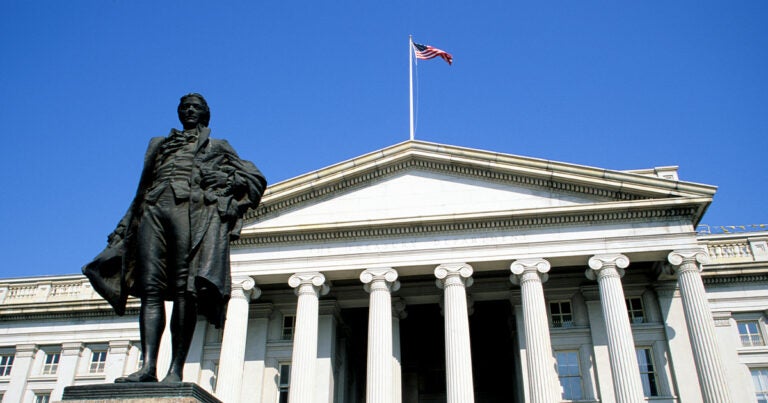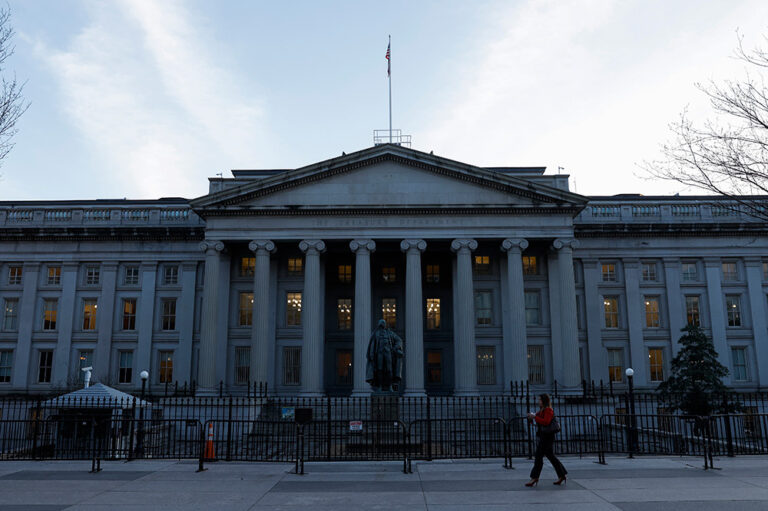One of the reasons to restrain debt and maintain a sustainable fiscal outlook is that emergencies arise that may necessitate federal support. For example, around World War II and the severe economic downturns surrounding the Great Recession and the Covid-19 pandemic, the United States ran high deficits to meet the country’s near-term needs.
That is why it is so troubling that the current deficit is so high right now, as the United States is not directly involved in a war and economic growth is healthy. In fact, in fiscal year (FY) 2024, the deficit was larger as a share of gross domestic product (GDP) than in any other year outside of the three emergency periods mentioned above. At 6.4 percent of GDP, last year’s deficit was more than twice the median deficit of 2.7 percent of GDP from 1930 (the first year that such calculations are provided by the Office of Management and Budget) to 2023.
Why Do Deficits Rise During Emergencies?
During wars involving direct conflict, defense spending can rise rapidly to meet urgent needs. Similarly, during major economic crises, federal spending can help alleviate the pain caused by widespread unemployment, food insecurity, and economic uncertainty. In the years surrounding World War II, deficits rose to as much as 30 percent of GDP. During the Great Recession and Covid-19 pandemic, deficits reached 10 percent of GDP and 15 percent of GDP, respectively.
Why Is the Deficit So High Right Now?
Although the United States faces a range of international and domestic challenges, the country does not currently face anything on the scale of the previous emergencies that drove deficits to record highs. For example, in FY24, the United States spent 3.0 percent of GDP on national defense, less than its 50-year average of 4.2 percent. Real GDP also grew at 2.7 percent, exceeding the average growth rate of 2.3 percent over the previous decade.
Instead, the high deficit reflected an ongoing structural mismatch in the budget. Federal spending — driven by rising healthcare costs, the aging of the population, and mounting interest payments on the national debt — was paired with revenues that are insufficient to meet the commitments that have been made. As a result, the deficit is high now and is projected to remain high in the future, reflecting that long-term gap between spending and revenues.
America’s debt is on an unsustainable path that not only threatens its future economy but also may weaken the nation’s ability to respond and recover when the next unexpected crisis hits. It should be a critical priority for the new administration and Congress to ensure a fiscally responsible future for the country. When the economy is doing well, such as now, is the perfect time to start.
Photo by Samuel Corum/Getty Images
Further Reading
The Fed Reduced the Short-Term Rate Again, but Interest Costs Remain High
High interest rates on U.S. Treasury securities increase the federal government’s borrowing costs.
What Types of Securities Does the Treasury Issue?
Let’s take a closer look at a few key characteristics of Treasury borrowing that can affect its budgetary cost.
Quarterly Treasury Refunding Statement: Borrowing Up Year Over Year
Key highlights from the most recent Quarterly Refunding include an increase in anticipated borrowing of $158 billion compared to the same period in the previous year.


